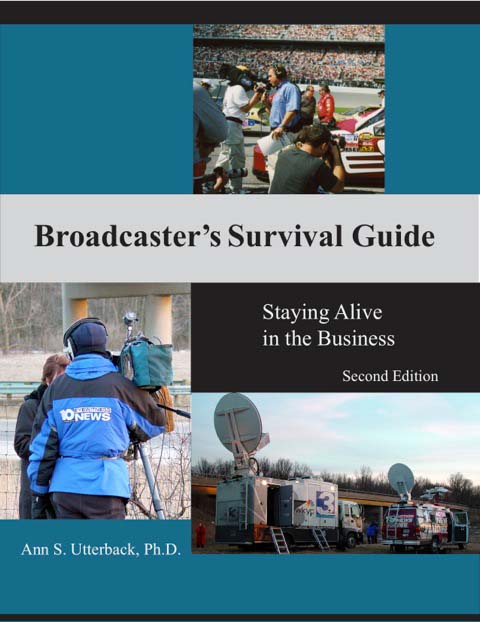|
VOICE ACTING Don't Slouch! Posture Affects Your Voice: Body Erect And Shoulders Relaxed ... October 7, 2014  By Ann S. Utterback, Ph.D. Voice Specialist By Ann S. Utterback, Ph.D. Voice Specialist Author, Broadcaster's Survival Guide Iíve been an advocate of voicing in a standing position for my entire career. But is simply standing enough? No. You need to stand with good posture for the best voice. We all know the lungs are involved in breathing, and if youíve read many of my posts you know that abdominal-diaphragmatic breathing is the best (for more on this type of breathing, click here). Abdominal-diaphragmatic breathing demands that the diaphragm has room to contract downward to assist in a good, controlled inhalation. Stooped shoulders actually put pressure on the rib cage making it more difficult to inhale properly. If the stooping is severe enough it can affect the downward contraction of the diaphragm, greatly limiting inhalation. Should you stand like a little toy soldier with your shoulders raised? Absolutely not! You want your shoulders to be relaxed so that you donít have tension in your neck, which can affect your pitch. Your body should be relaxed but erect. Here are some ways to practice this posture (if you have any back or neck problems, do not do these exercises without consulting your physician): Stand with your feet hip-width apart about six inches from a wall. Let your lower and upper back rest on the wall. Roll your shoulders forward and back. Now imagine thereís a string lifting your head and spine up. Lower your chin so itís parallel to the floor. Gently move your head straight back and try to rest it on the wall (or as close to it as is comfortable). Keep your chin in the correct position. Next raise your arms up as you would if a sheriff in the old West said, "Stick Ďem up!Ē Try to get your upper arms and the back of your hands against on the wall. Donít force it. Just go as far as is comfortable. Hold this posture and relax for a few abdominal-diaphragmatic inhalations and exhalations. If youíre having trouble getting your arms back, try lying on the floor with a rolled up towel or yoga mat up and down your spine and neck. Start by putting your arms straight out from your body with your palms up, resting them on the floor. If this is difficult, stay with it for as long as it takes until it feels easy and your chest feels open. If itís easy, "Stick Ďem up!Ē again with your arms bent on the floor and your palms toward the ceiling. Rest in this position each time you do the exercise for a few inhalations and exhalations. Keep these exercises up for several weeks, and your posture should improve along with your breathing. - See more at: http://onlinevoicecoaching.com/?page_id=1247&mc_cid=f56b10e90c&mc_eid=a06e28dbfb#sthash.kozicf7m.dpufBut is simply standing enough? No. You need to stand with good posture for the best voice. We all know the lungs are involved in breathing, and abdominal-diaphragmatic breathing is the best. Abdominal-diaphragmatic breathing demands that the diaphragm has room to contract downward to assist in a good, controlled inhalation. Stooped shoulders actually put pressure on the rib cage, making it more difficult to inhale properly. If the stooping is severe enough it can affect the downward contraction of the diaphragm, greatly limiting inhalation. BODY ERECT, BUT RELAXED Should you stand like a little toy soldier with your shoulders raised? Absolutely not! You want your shoulders to be relaxed so that you donít have tension in your neck, which can affect your pitch. Your body should be relaxed but erect. Here are some ways to practice this posture (but if you have any back or neck problems, do not do these exercises without consulting your physician). 'STICK 'EM UP!' 1. Stand with your feet hip-width apart about six inches from a wall. Let your lower and upper back rest on the wall. 2. Roll your shoulders forward and back. 3. Now imagine thereís a string lifting your head and spine up. Lower your chin so itís parallel to the floor. Gently move your head straight back and try to rest it on the wall (or as close to it as is comfortable). Keep your chin in the correct position. 4. Next raise your arms up as you would if a sheriff in the old West said, "Stick Ďem up!Ē Try to get your upper arms and the back of your hands against on the wall. Donít force it. Just go as far as is comfortable. 5. Hold this posture and relax for a few abdominal-diaphragmatic inhalations and exhalations. ARMS BACK ... If youíre having trouble getting your arms back, try lying on the floor with a rolled up towel or yoga mat up and down your spine and neck. 1. Put your arms straight out from your body with your palms up, resting them on the floor. 2. If this is difficult, stay with it for as long as it takes until it feels easy and your chest feels open. If itís easy, "Stick Ďem up!Ē again with your arms bent on the floor and your palms toward the ceiling. 3. Rest in this position each time you do the exercise for a few inhalations and exhalations. Keep these exercises up for several weeks, and your posture should improve along with your breathing. --------------------------------------------  ABOUT ANN ABOUT ANNAnn
S. Utterback, Ph.D., is a voice specialist with more than 40 years
experience and has helped hundreds of people make the most of their
voices, working with broadcasters, voice over artists and podcasters
around the world. An author of eight books and over 50 articles on
voice, her Broadcaster's Survival Guide
e-book offers more tips on dealing with holiday stress, plus advice on
how to improve your voice over performance by making simple lifestyle
changes.
Web: http://OnlineVoiceCoaching.comClick for: Broadcaster's Survival Guide |
|
|
Tell Us What YOU Think!
Please Note: Since we check for spam, there will be a slight delay in the actual posting of your comment.
Comments
No comments have been posted yet. Hurry, and you could be the first!
Email alerts to new VoiceOverXtra articles
With Sean Daeley and Paul Stefano - check it out!
For essential voice-over business strategies
Get your bi-weekly dose here ... all things VO!
As of the NEW website launch, 03/22/2012










click for new article alerts